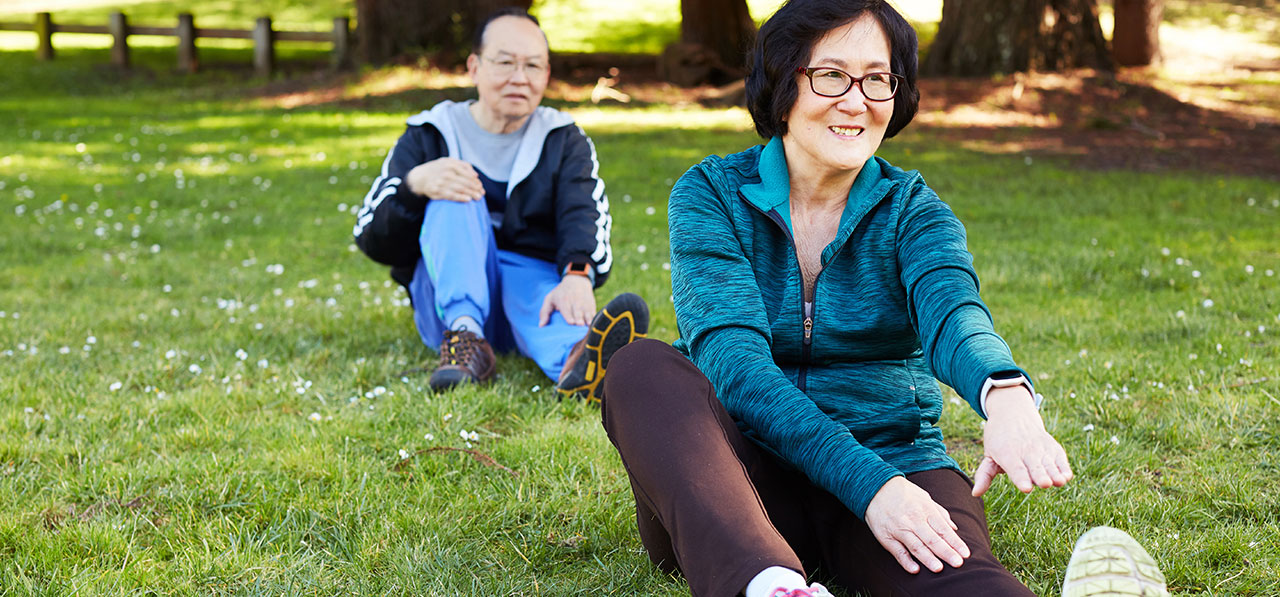3 Wellness Activities for Older Adults that Align with New Physical Activity Guidelines
The federal government’s new set of physical activity guidelines reinforce the notion that being physically active is one of the most important actions that people of all ages can take to improve their health. New findings in the report show the immediate and long-term benefits of activity and the effects of exercise on how people feel, function, and sleep.
The guidelines offer detailed physical activity recommendations to improve health outcomes for multiple population age groups, starting at age three. Here are the recommendations for the two segments most vital to your workforce:
- Adults should do at least 150 to 300 minutes a week of moderate-intensity, or 75 to 150 minutes a week of vigorous-intensity aerobic physical activity, or an equivalent combination of moderate and vigorous aerobic activity. According to the guidelines, aerobic activities can range from 60-85% of your maximum heart rate. They should also do muscle-strengthening activities two or more days a week.
- Older adults, or people aged 65 and older, should do the same amount: at least 150 to 300 minutes of moderate-intensity physical activity a week, or an equivalent amount (75 to 150 minutes) of vigorous-intensity activity. And they should do multicomponent physical activity that includes balance training as well as aerobic and muscle-strengthening activities.
While you may have already launched specific wellness programs and activities to attract your millennials and GenX employees, now may be the time to focus on the older members of your team. Here are three wellness ideas that may help them meet the multicomponent activity recommendations as outlined in the new report:
1. Find balance
The guidelines reinforce the importance of balance training for older adults. Balance activities improve the body’s ability to resist forces within or outside of the body that cause falls while a person is stationary or moving. Strengthening muscles of the back, abdomen, and legs can improve balance.
The report suggests options such as yoga and Tai Chi classes for better balance, noting that yoga has many forms that range in intensity level from meditative Hatha yoga to power yoga. The report states that yoga can also be considered both aerobic and muscle strengthening, depending on the type and the postures in the practice. Tai chi is also a graceful form of exercise that uses gentle, flowing movement to increase flexibility and balance.
2. Just keep swimming
Think about adding a splash of variety with swimming options, such as lap swim, water walking, or water aerobics to your exercise routine this year. Many community pools and fitness clubs offer pool day passes or lap swim vouchers that you could pre-purchase and distribute to interested employees. Vouchers range in price, but in my area they cost as little as $2 per swim for adults who are 50+.
Swimming offers a full-body workout that can boost the heart rate, tone the muscles, and increase flexibility, all the while being easy on the joints. Since water is about 800 times denser than air, the body has to work harder in the pool, whether the person is doing laps or water aerobics. There is also evidence that swimming can slow down the aging process. And if your employees are like me and easily lose count of laps as soon as they dive in, let them know that several Fitbit devices work as swim-proof stat trackers that can record swimming duration, distance, pace, and calories burned.
3. Pump up with muscle-strengthening activities
The guidelines suggest that adults do strengthening activities that involve all the major muscle groups: legs, hips, back, abdomen, chest, shoulders, and arms. Activities such as weight lifting and resistance training (using either elastic bands or body weight) are good ways for employees to improve their musculoskeletal fitness, which the guidelines define as “the integrated function of muscle strength, muscle endurance, and muscle power to enable the performance of work.”
Muscle strengthening activities can help promote weight maintenance and can also help maintain lean body mass. The guidelines note that resistance exercises improve muscular strength in persons with conditions such as stroke, multiple sclerosis, cerebral palsy, and spinal cord injury.
A simple way for employees to do muscle-strengthening routines at their convenience is through the Fitbit Coach training app. It offers beginner, intermediate, and advanced workout routines that focus on developing core, arm and shoulder, and leg strength. If you want to invest in shared strength-training tools for your company gym, the next-generation of weightlifting machines are sleek and smart and can recognize each individual and adapt to personal strength preferences.
Let’s Go
As an added bonus, the government now provides Move Your Way campaign resources, including fact sheets, posters, and interactive tools related to the new guidelines. Those educational tools combined with your activity options should help your employees dive in and make a splash with improved health goals.



